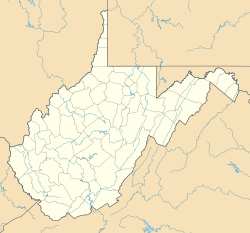Little Birch, West Virginia facts for kids
Quick facts for kids
Little Birch, West Virginia
|
|
|---|---|
| Country | United States |
| State | West Virginia |
| County | Braxton |
| Elevation | 1,138 ft (347 m) |
| Time zone | UTC-5 (Eastern (EST)) |
| • Summer (DST) | UTC-4 (EDT) |
| ZIP code |
26629
|
| Area code(s) | 304 & 681 |
| GNIS feature ID | 1542030 |
Little Birch is a small place in Braxton County, West Virginia. It is not an official town with its own government. Instead, it is called an unincorporated community. This means it is a group of homes and businesses that are not part of a city or town.
Little Birch is also a linear settlement. This means the buildings are mostly spread out along a main road. It is about 50 miles (80 km) northeast of Charleston, which is the capital city of West Virginia. The community is also about 1.5 miles (2.4 km) east of Route 19. The closest larger place is Sutton, which is about 6 miles (9.7 km) north.
What You'll Find in Little Birch
Little Birch is part of the Central Appalachia Empowerment Zone. This is a special area that gets help to grow and create jobs. The community gets its name from the Birch River. This river flows right under Old Turnpike Road.
Even though it's a small place, Little Birch has some important services. It has its own post office with the ZIP code 26629. There is also an elementary school for younger students. You can find a gas station with a small store, a village hall for community events, and a business that sells cars. The Little Birch Baptist Church is also located on Old Turnpike Road. It is part of the Southern Baptist Convention.
Famous People from Little Birch
One notable person born in Little Birch was Arvil Ernest Harris (1925–1965). He grew up to become the mayor of Huntington, West Virginia. He was also a professor at Marshall University in Huntington. There, he taught about how governments work and about society.
Arvil Ernest Harris was very important at Marshall University. He helped start the university's graduate program in 1948. He also served as the dean of the graduate school until 1964. To honor his work, a building at Marshall University was named after him in 1976.



